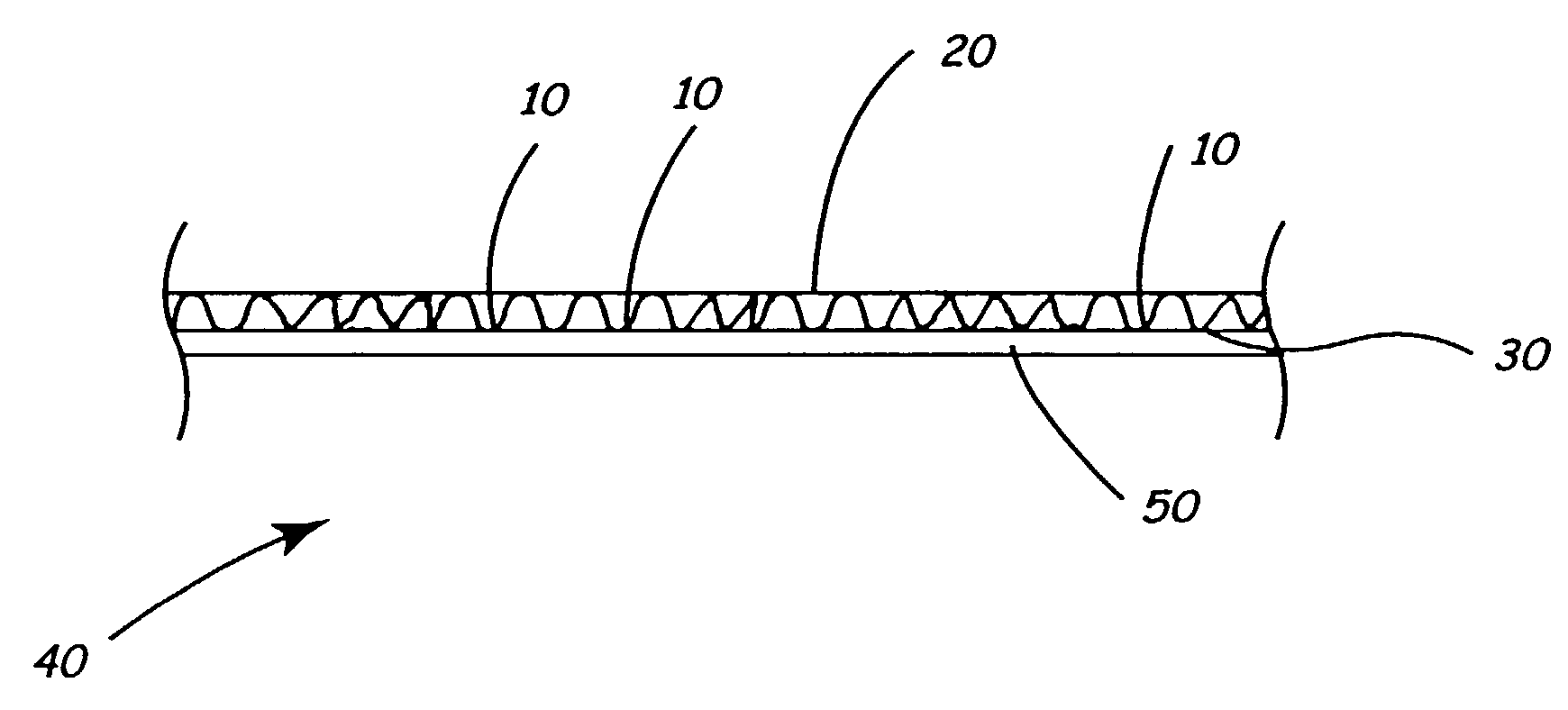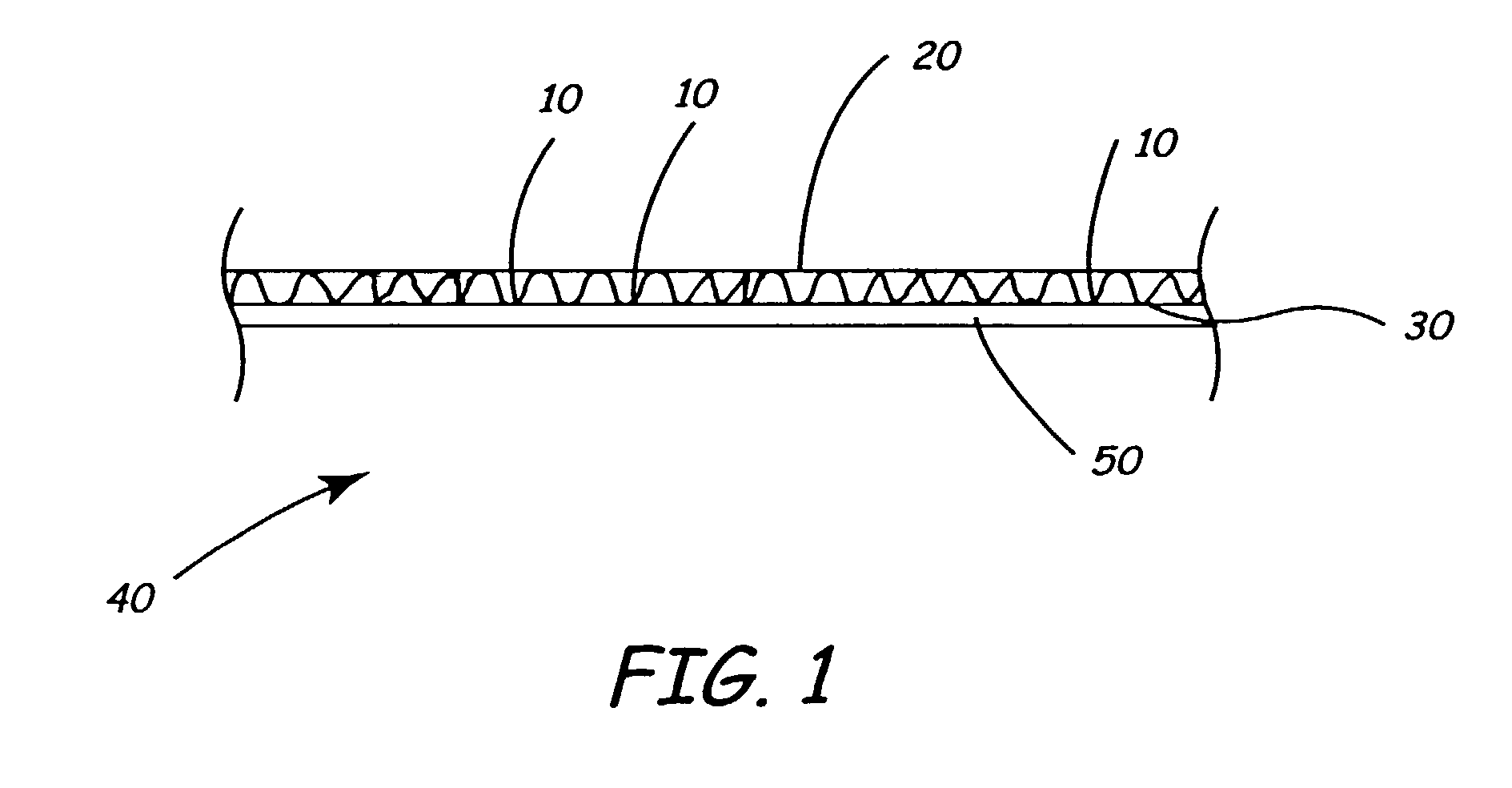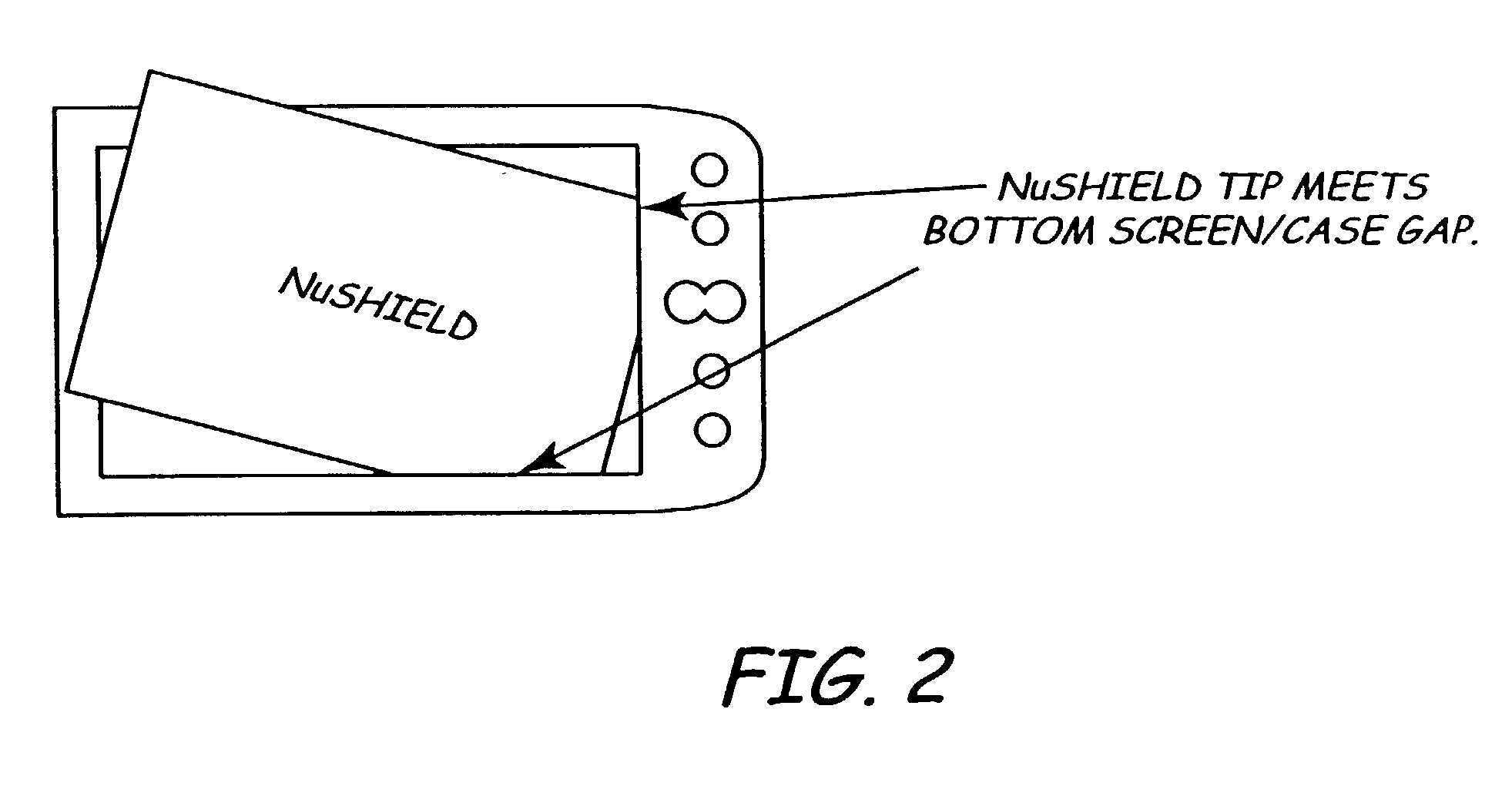Screen protector
a technology of protective film and ring, applied in the field of screen protector, can solve the problems of inconvenient use of protective film, difficult to remove, build in strength, etc., and achieve the effect of minimizing or eliminating the potential for newton ring formation
- Summary
- Abstract
- Description
- Claims
- Application Information
AI Technical Summary
Benefits of technology
Problems solved by technology
Method used
Image
Examples
Embodiment Construction
[0017]The features and other details of the invention will now be more particularly described and pointed out in the claims. It will be understood that the particular embodiments of the invention are shown by illustration and not as limitations of the invention. The principal features of the invention can be employed in various embodiments without departing from the scope of the present invention. All parts and percentages are by weight unless otherwise stated.
[0018]The present invention relates to protective shields and more particularly to a new and improved film protection for screens of electronic devices such as personal digital assistants (PDA's) cellular telephones, handheld computers, and other portable electronic devices whereby the properties of the film or an adjunct coating prevent the formation of interference fringes caused by contact of the film with the screen of the device and air gaps surrounding the contact area. Such electronic devices include, for example, but a...
PUM
| Property | Measurement | Unit |
|---|---|---|
| diameter | aaaaa | aaaaa |
| diameter | aaaaa | aaaaa |
| thickness | aaaaa | aaaaa |
Abstract
Description
Claims
Application Information
 Login to View More
Login to View More - R&D
- Intellectual Property
- Life Sciences
- Materials
- Tech Scout
- Unparalleled Data Quality
- Higher Quality Content
- 60% Fewer Hallucinations
Browse by: Latest US Patents, China's latest patents, Technical Efficacy Thesaurus, Application Domain, Technology Topic, Popular Technical Reports.
© 2025 PatSnap. All rights reserved.Legal|Privacy policy|Modern Slavery Act Transparency Statement|Sitemap|About US| Contact US: help@patsnap.com



